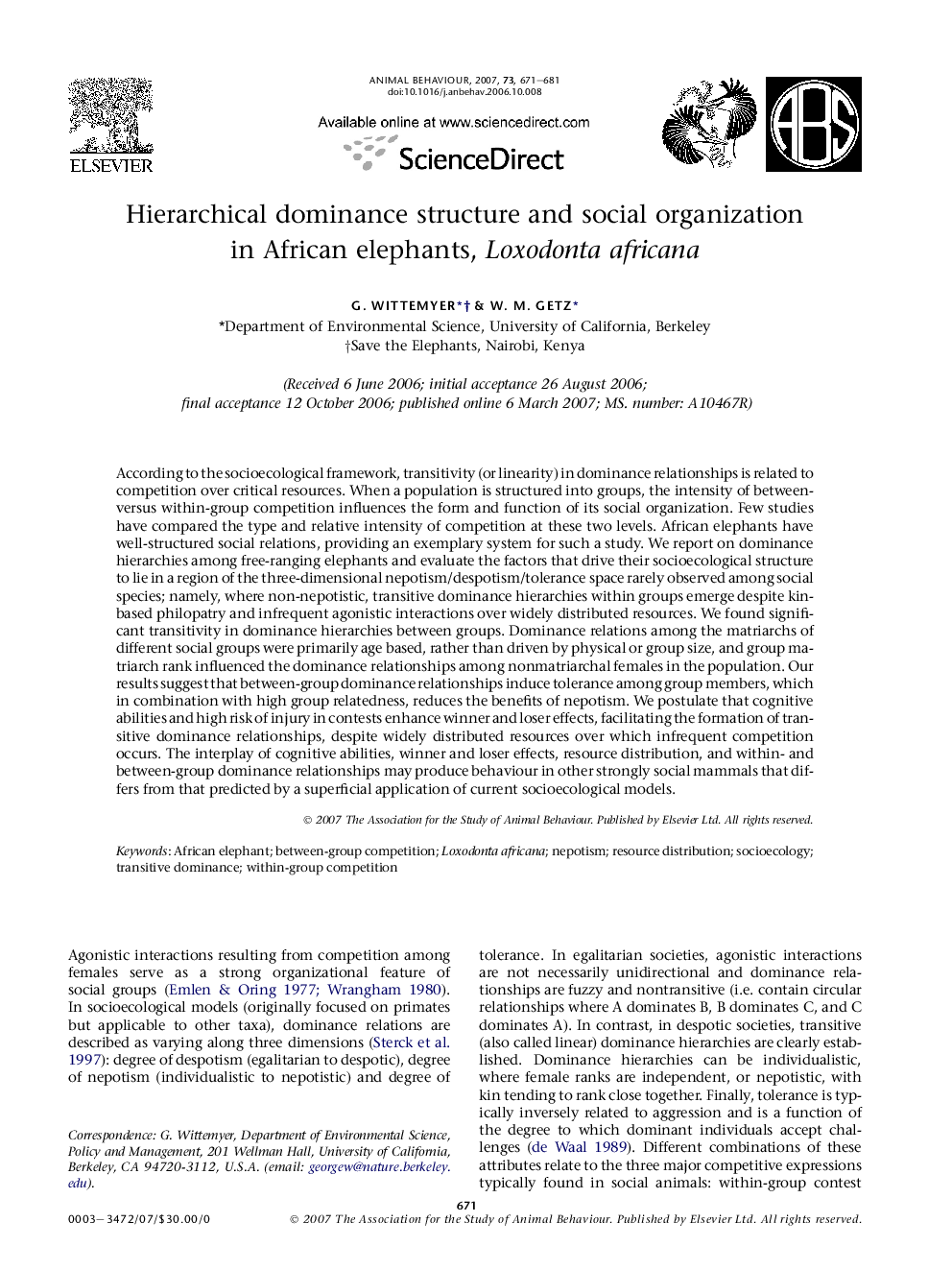| کد مقاله | کد نشریه | سال انتشار | مقاله انگلیسی | نسخه تمام متن |
|---|---|---|---|---|
| 2419021 | 1104363 | 2007 | 11 صفحه PDF | دانلود رایگان |

According to the socioecological framework, transitivity (or linearity) in dominance relationships is related to competition over critical resources. When a population is structured into groups, the intensity of between- versus within-group competition influences the form and function of its social organization. Few studies have compared the type and relative intensity of competition at these two levels. African elephants have well-structured social relations, providing an exemplary system for such a study. We report on dominance hierarchies among free-ranging elephants and evaluate the factors that drive their socioecological structure to lie in a region of the three-dimensional nepotism/despotism/tolerance space rarely observed among social species; namely, where non-nepotistic, transitive dominance hierarchies within groups emerge despite kin-based philopatry and infrequent agonistic interactions over widely distributed resources. We found significant transitivity in dominance hierarchies between groups. Dominance relations among the matriarchs of different social groups were primarily age based, rather than driven by physical or group size, and group matriarch rank influenced the dominance relationships among nonmatriarchal females in the population. Our results suggest that between-group dominance relationships induce tolerance among group members, which in combination with high group relatedness, reduces the benefits of nepotism. We postulate that cognitive abilities and high risk of injury in contests enhance winner and loser effects, facilitating the formation of transitive dominance relationships, despite widely distributed resources over which infrequent competition occurs. The interplay of cognitive abilities, winner and loser effects, resource distribution, and within- and between-group dominance relationships may produce behaviour in other strongly social mammals that differs from that predicted by a superficial application of current socioecological models.
Journal: Animal Behaviour - Volume 73, Issue 4, April 2007, Pages 671–681